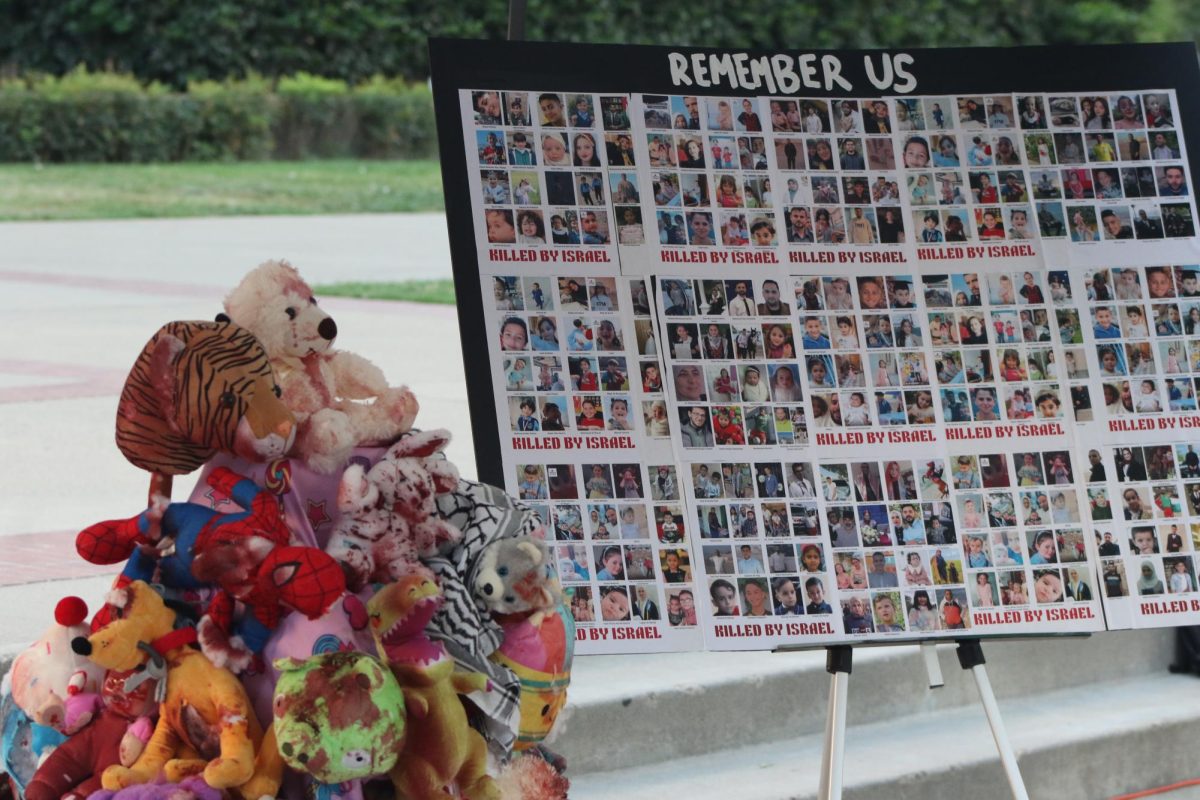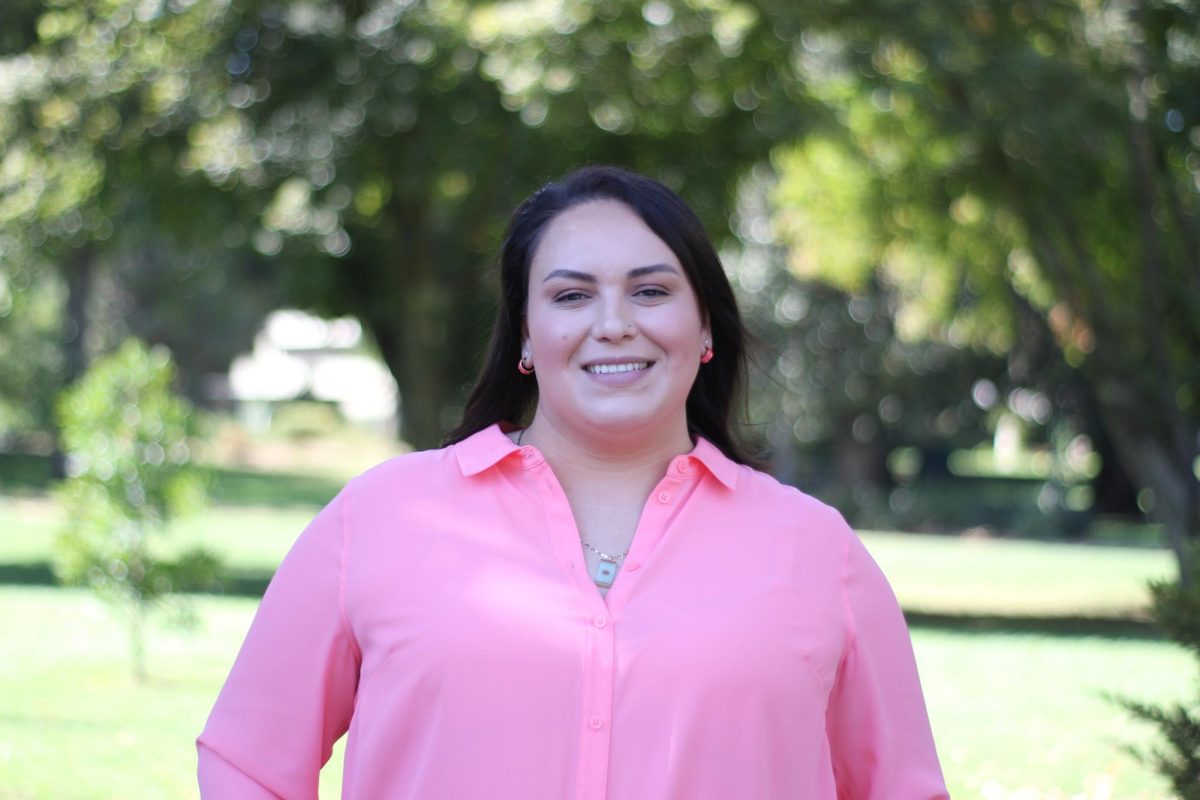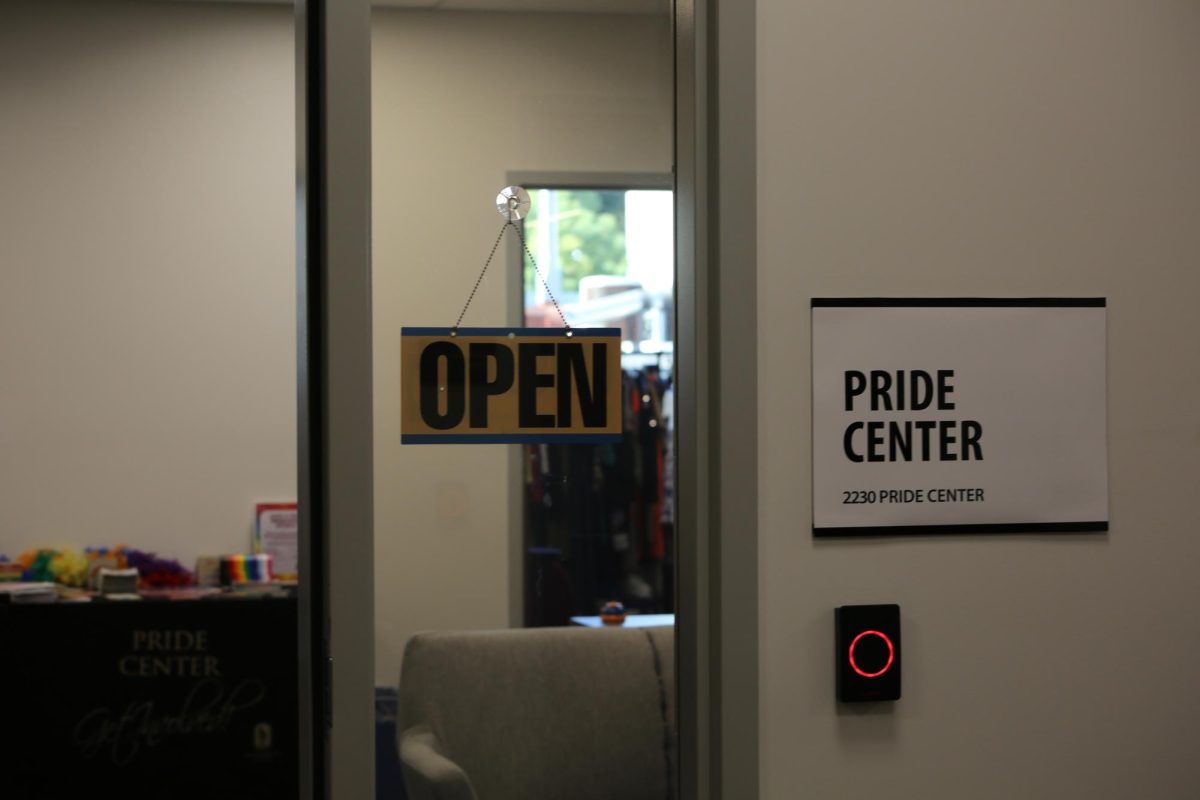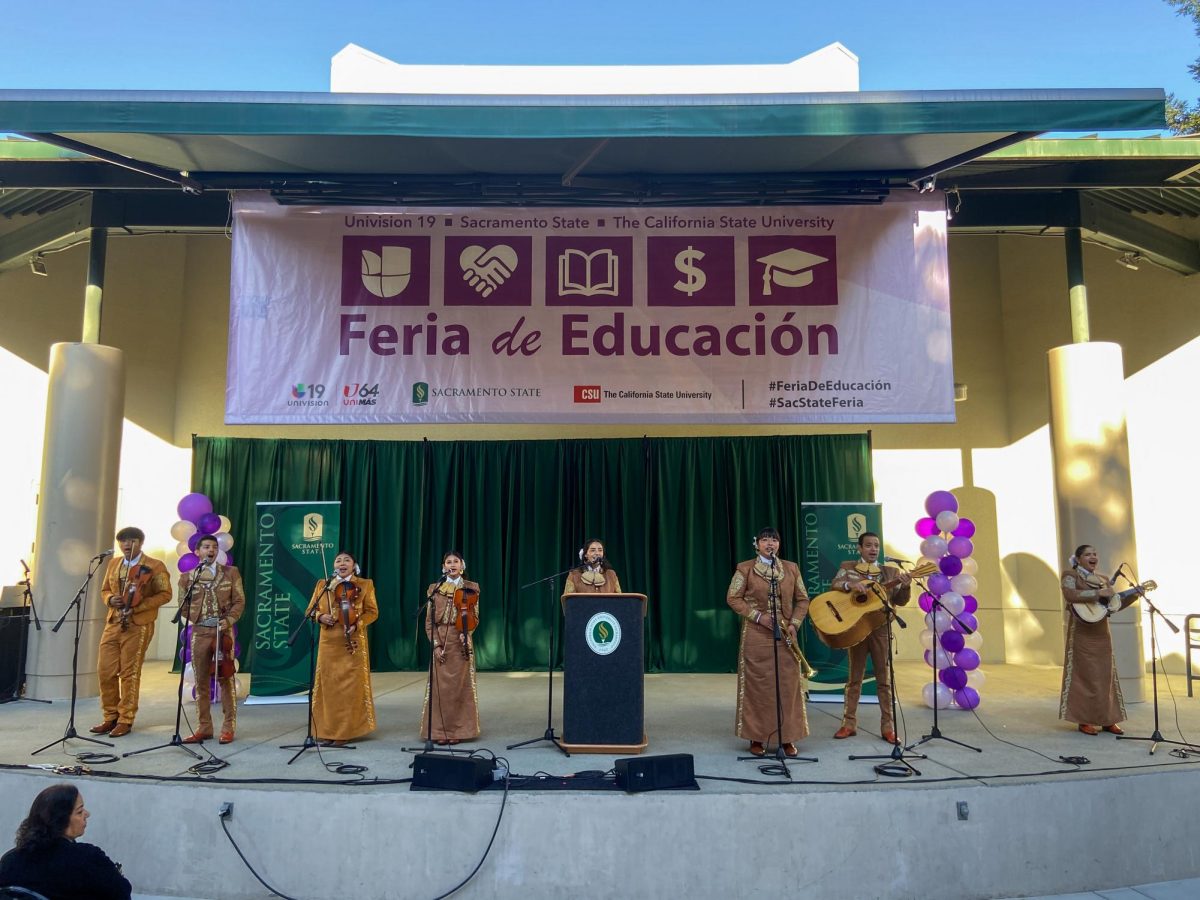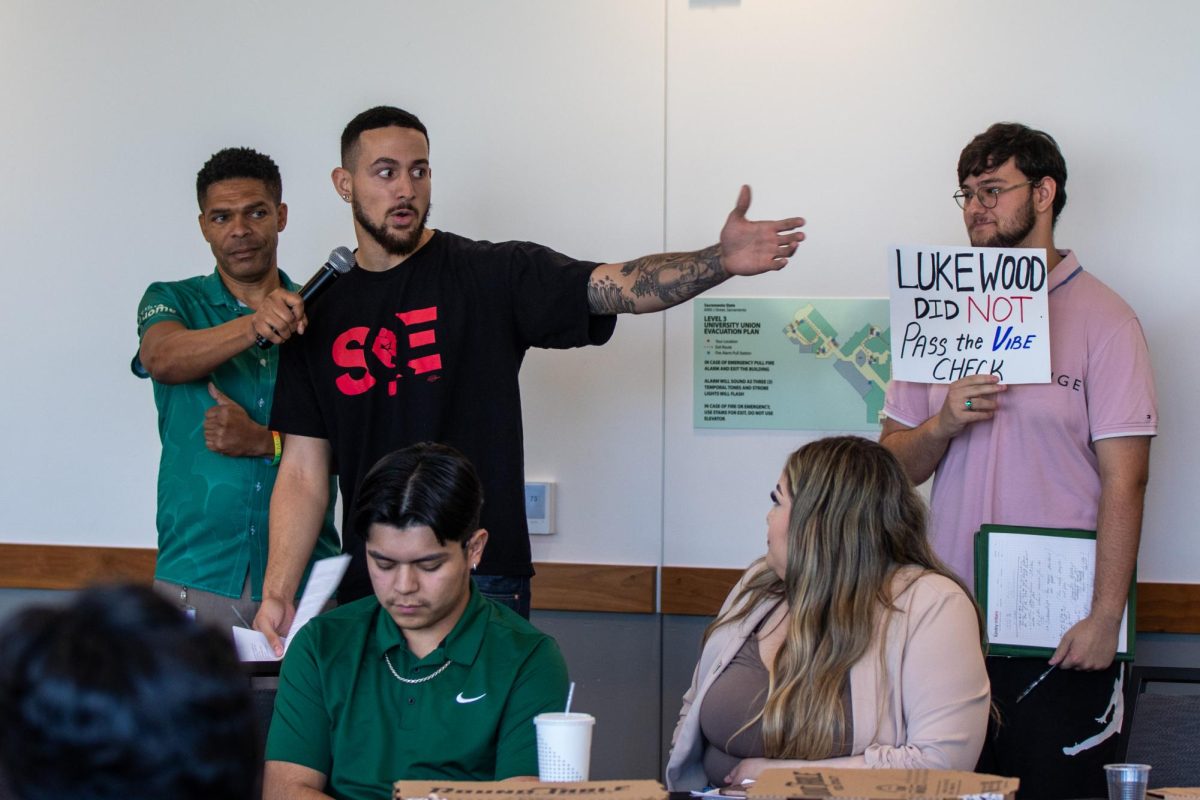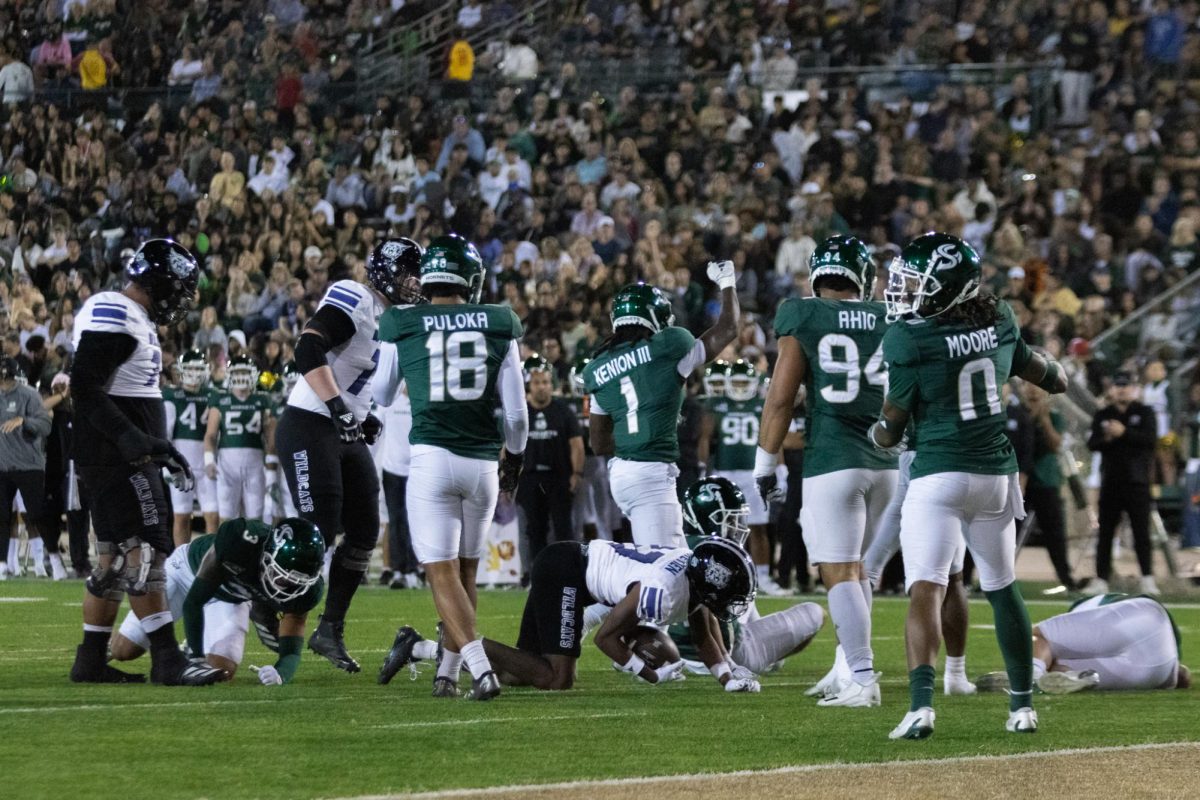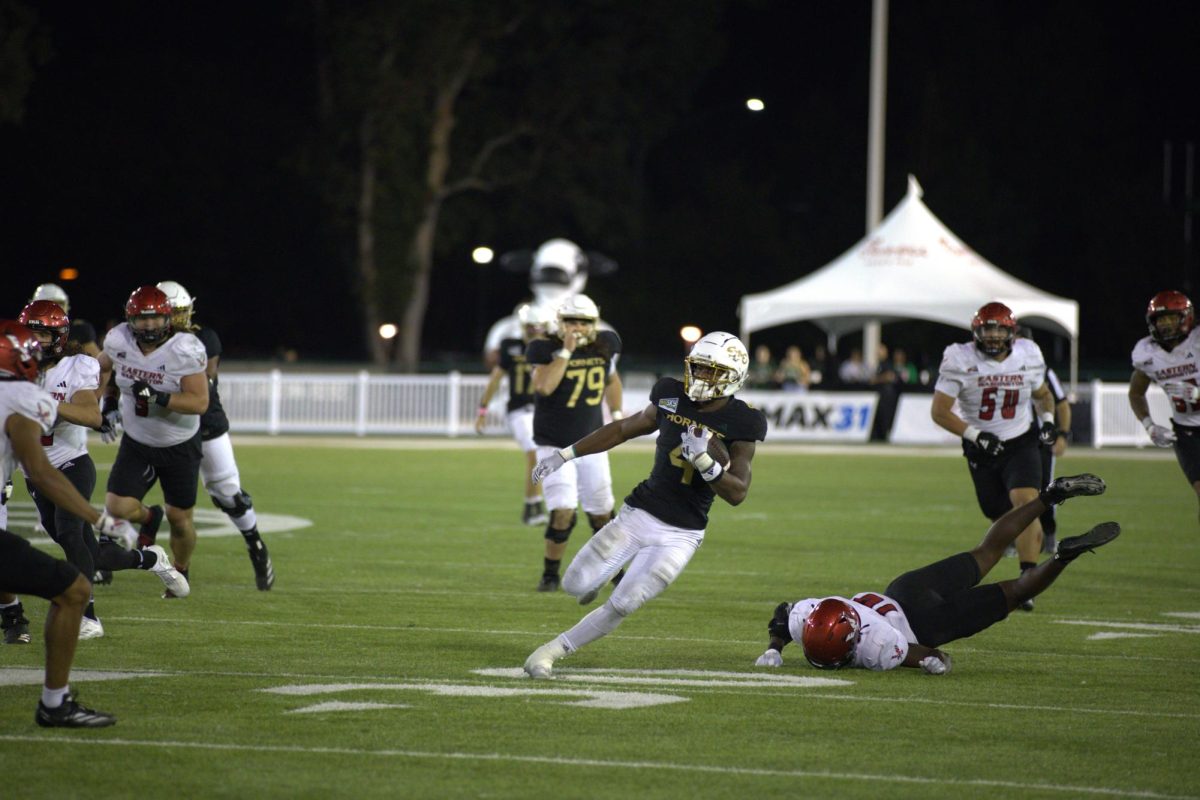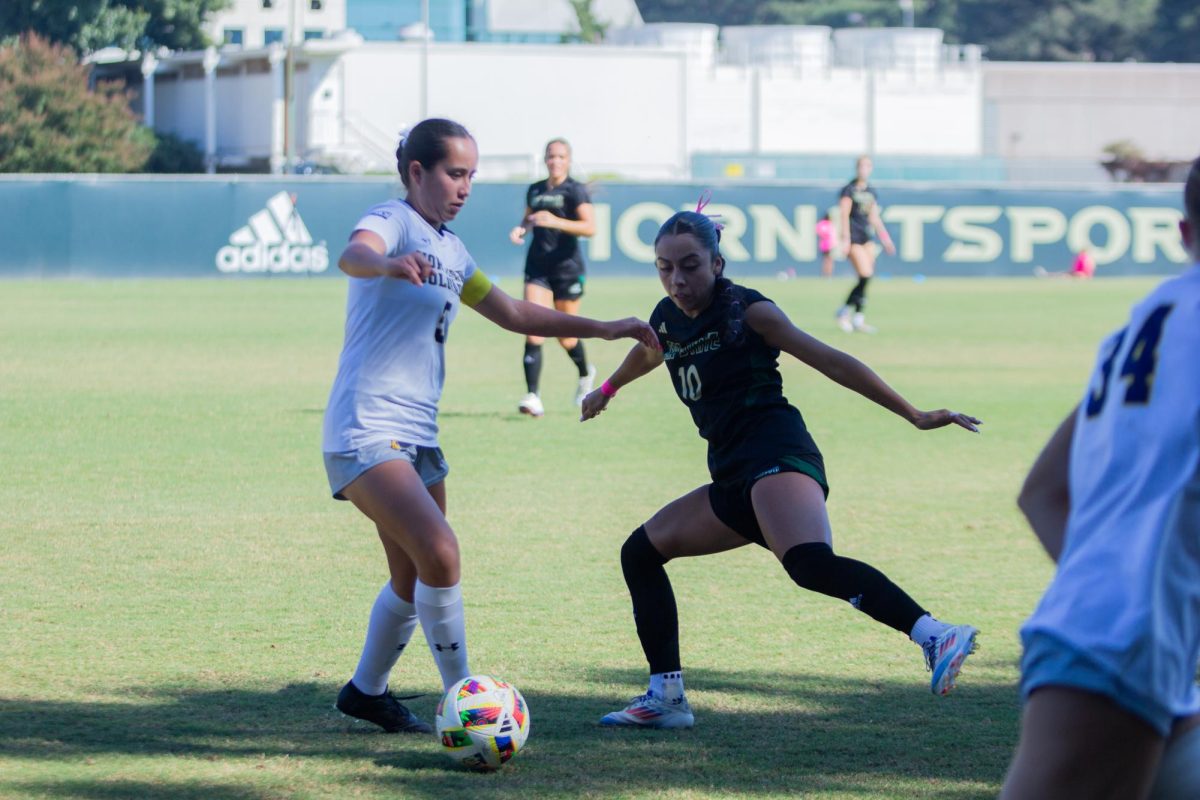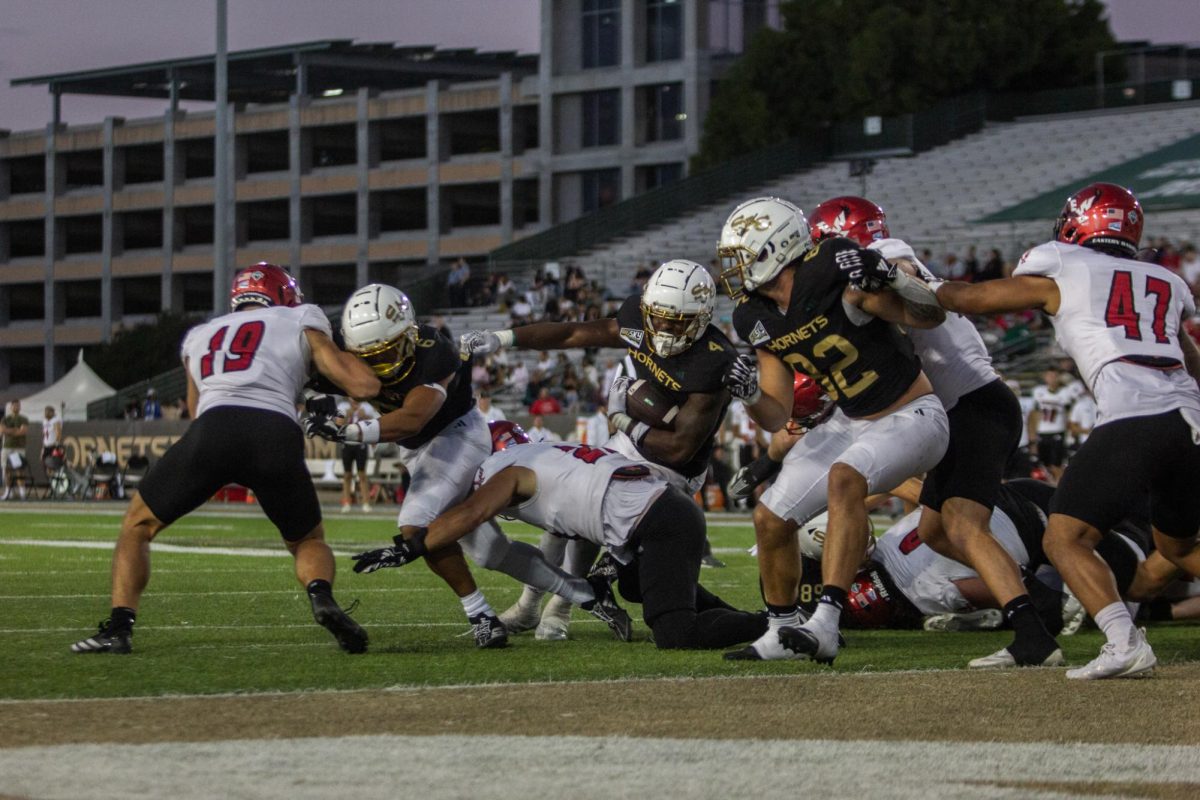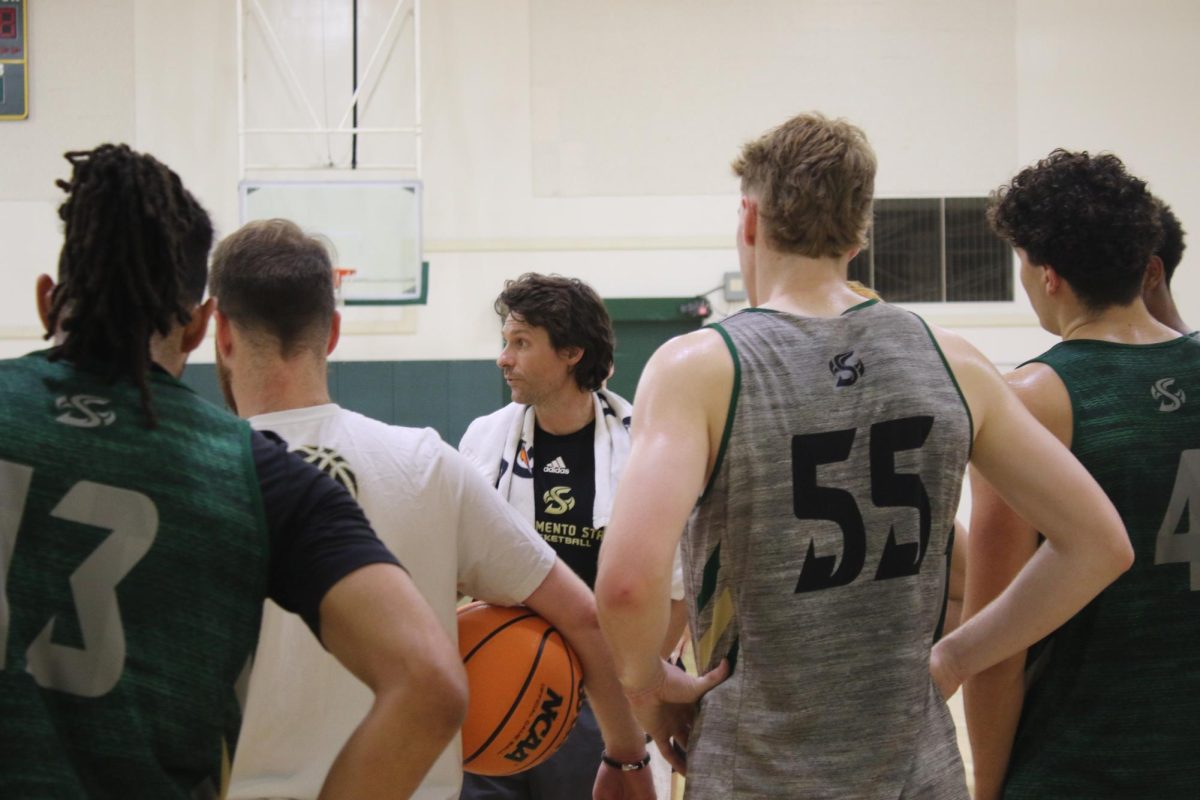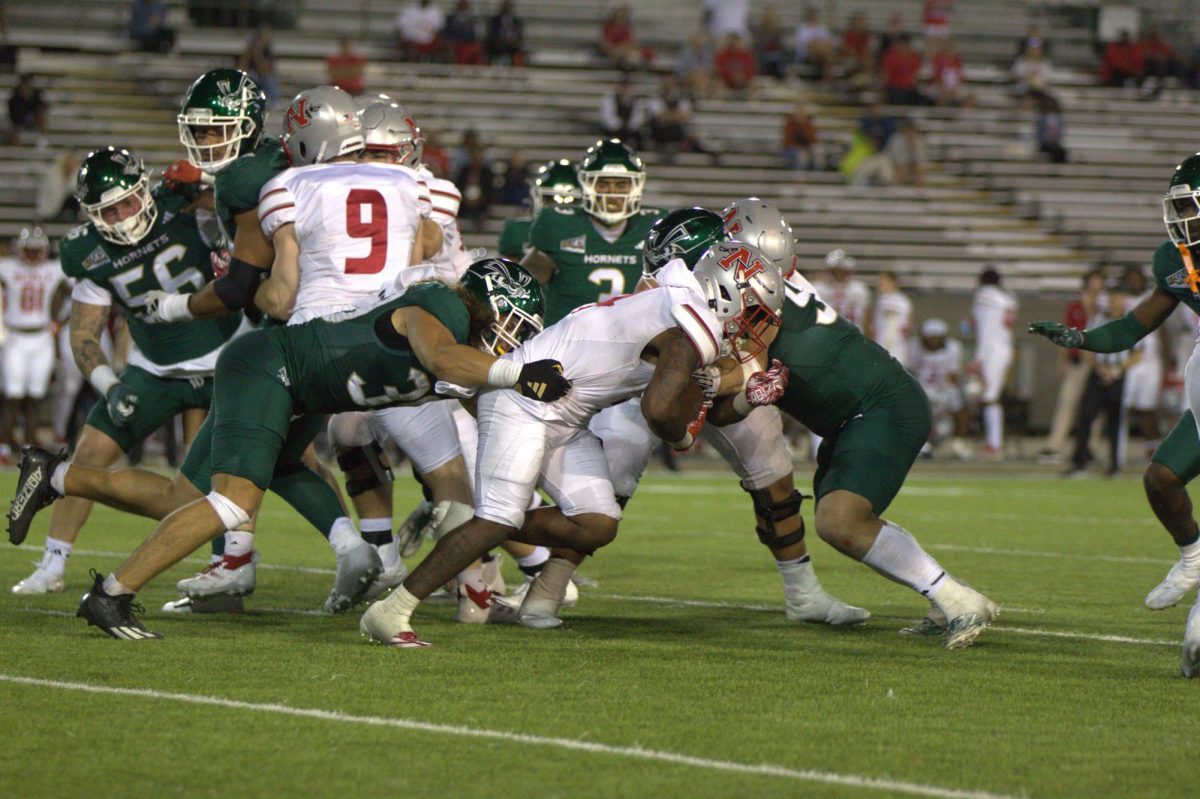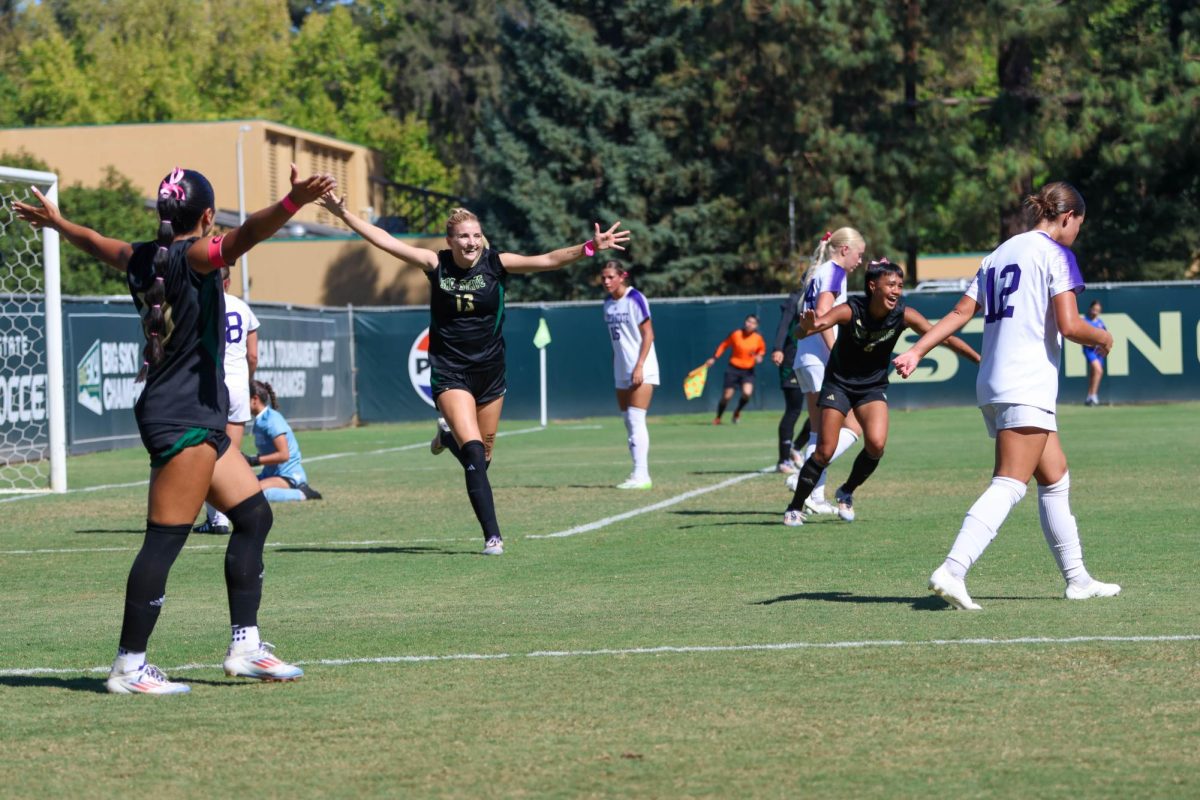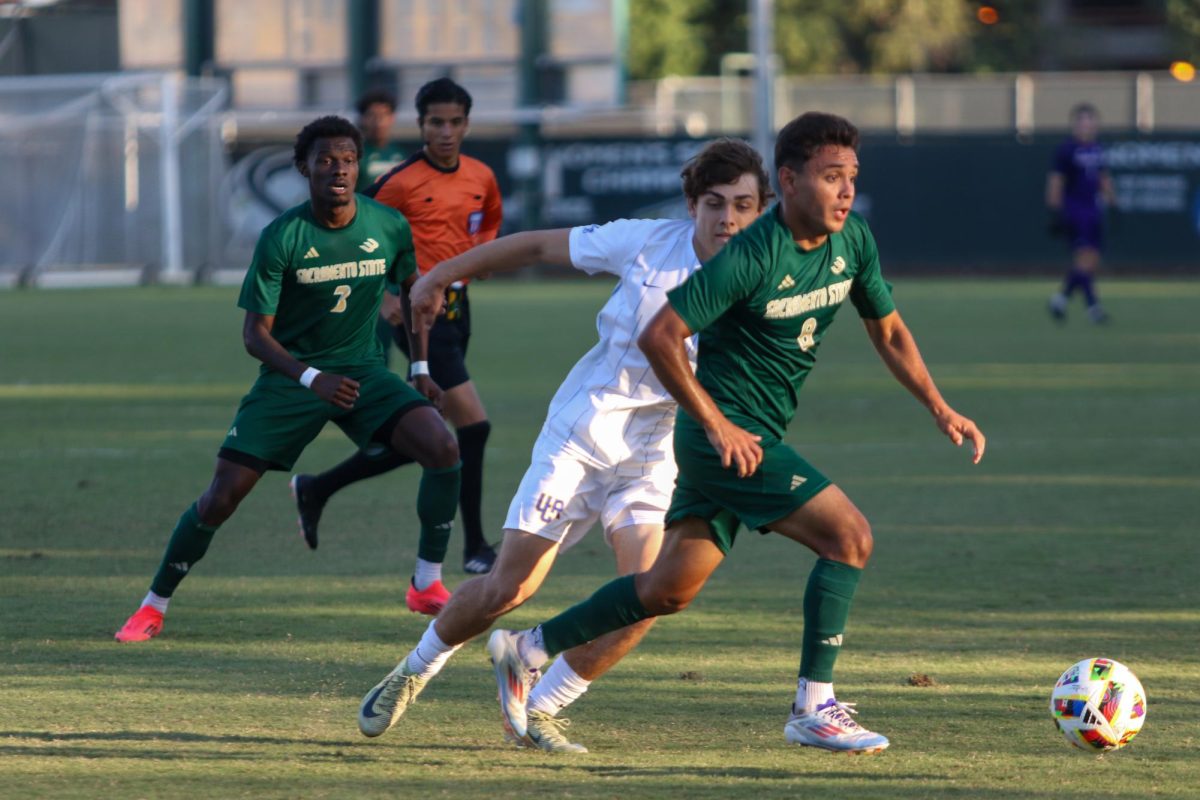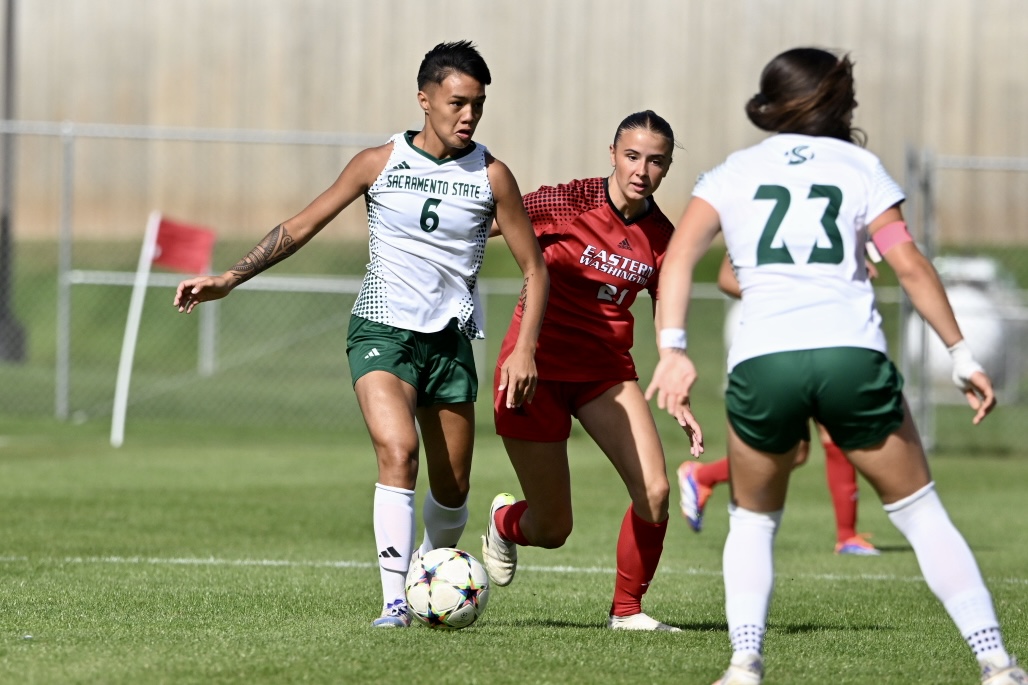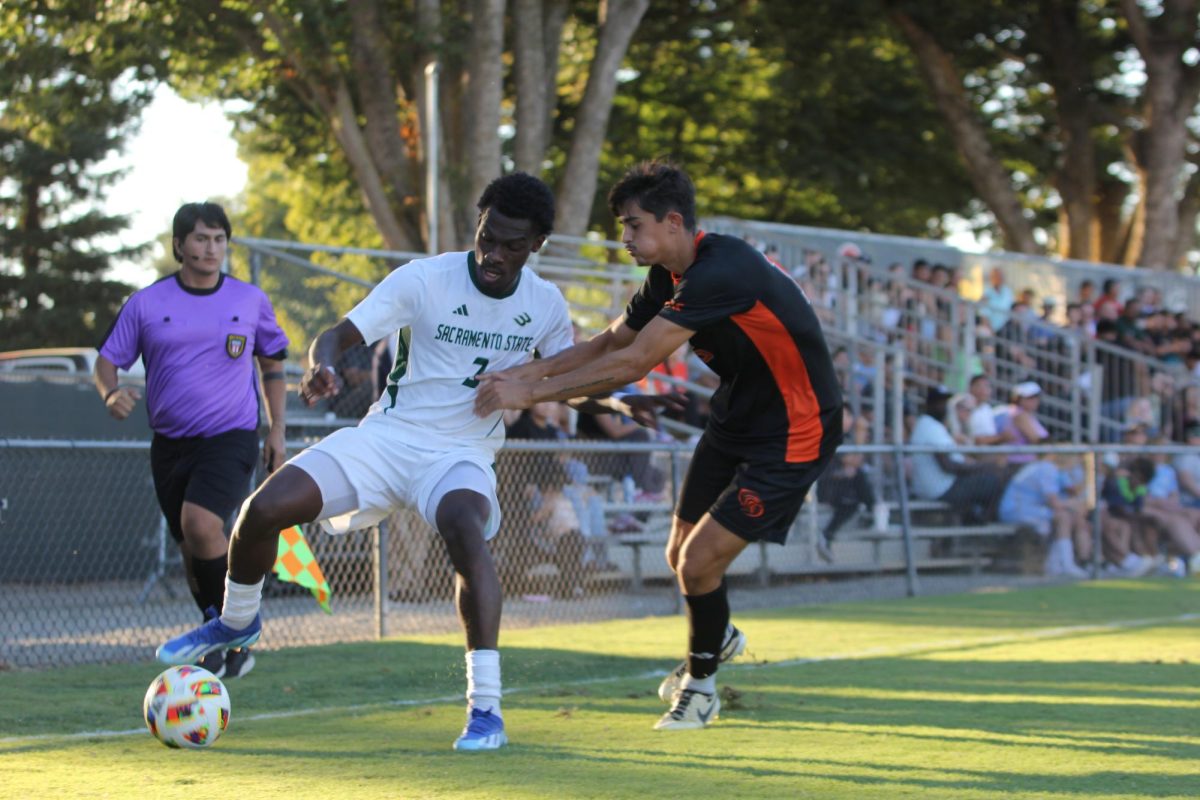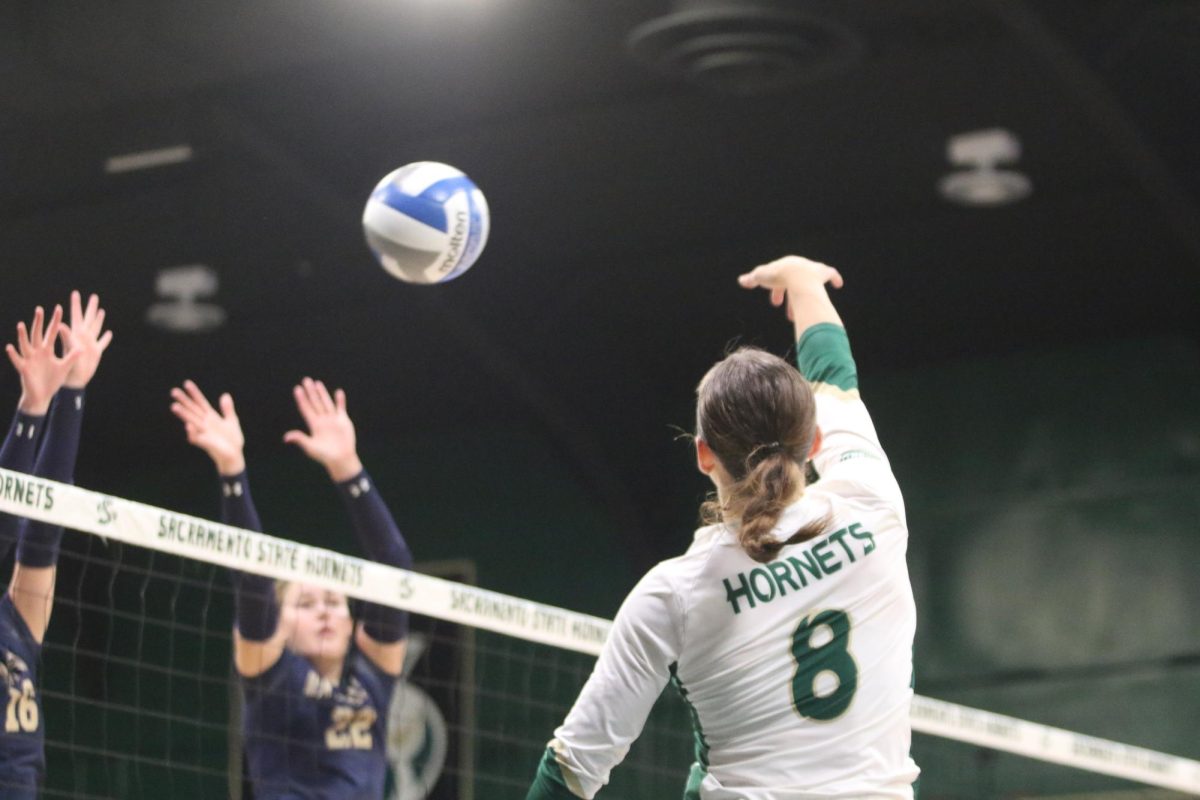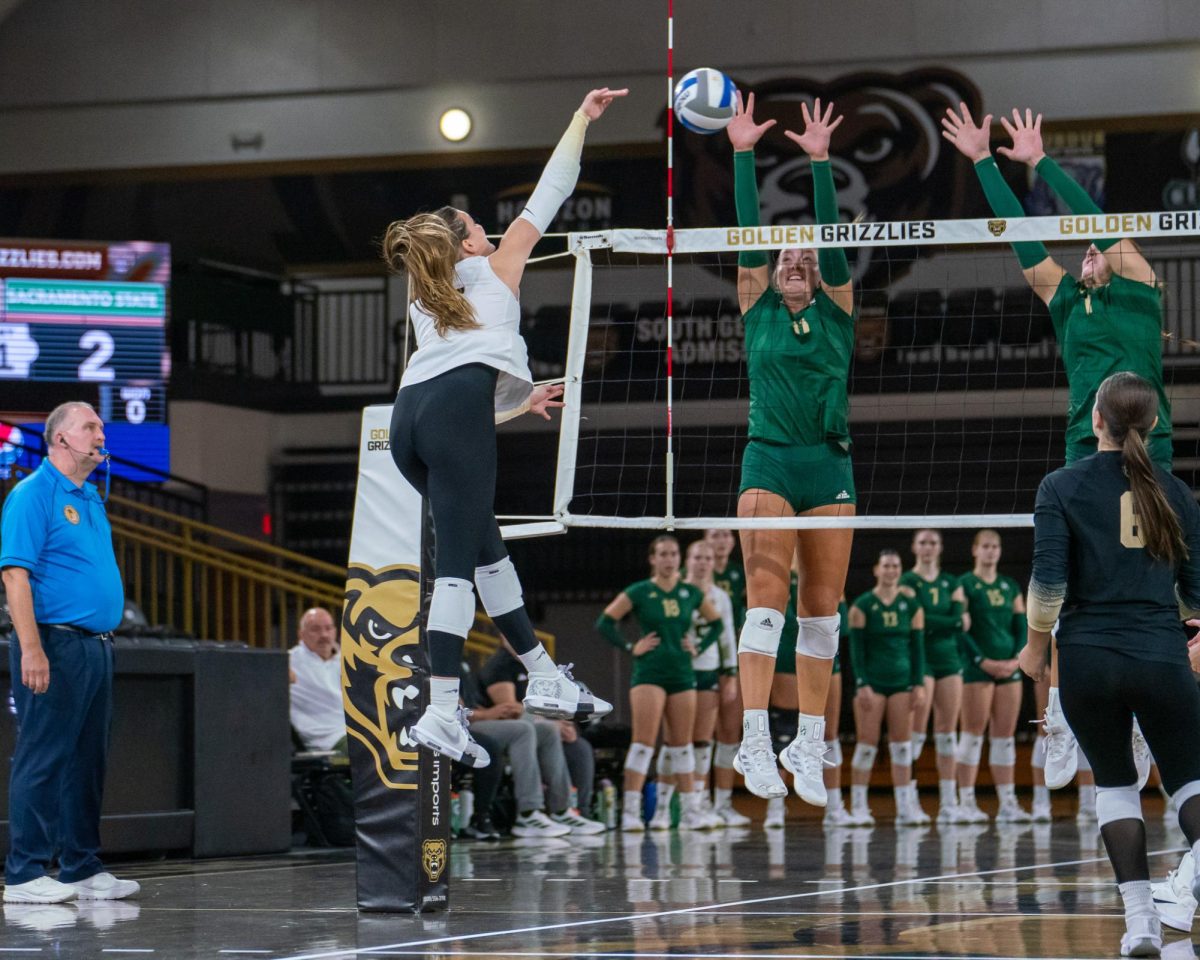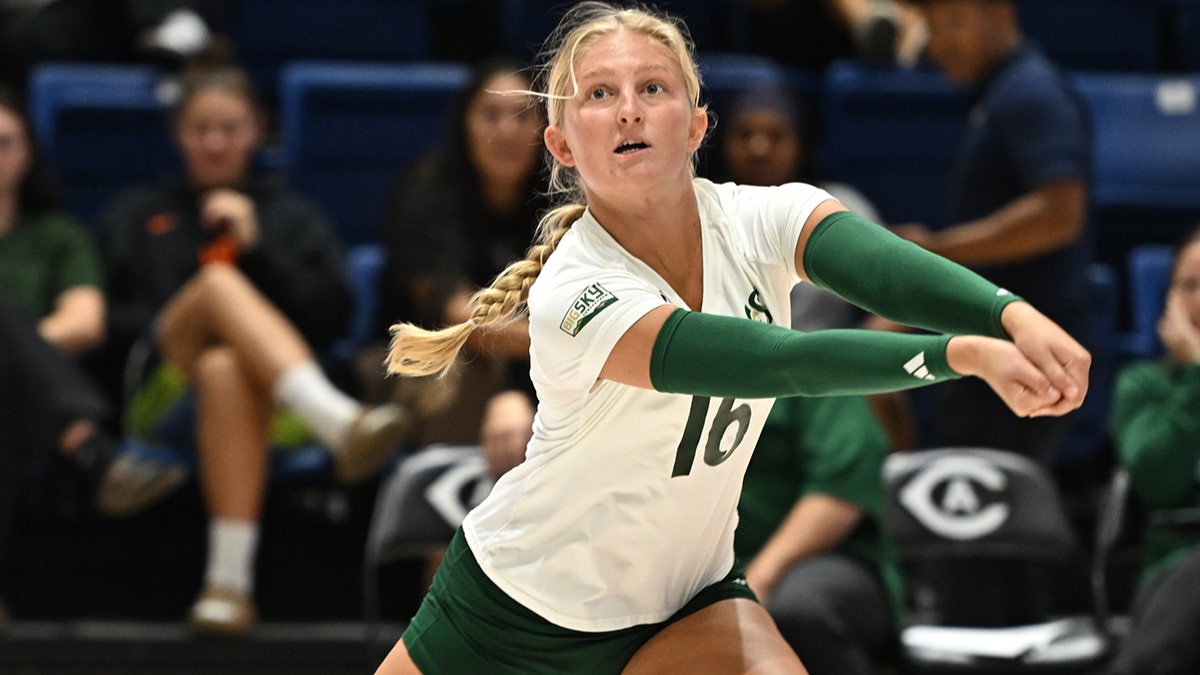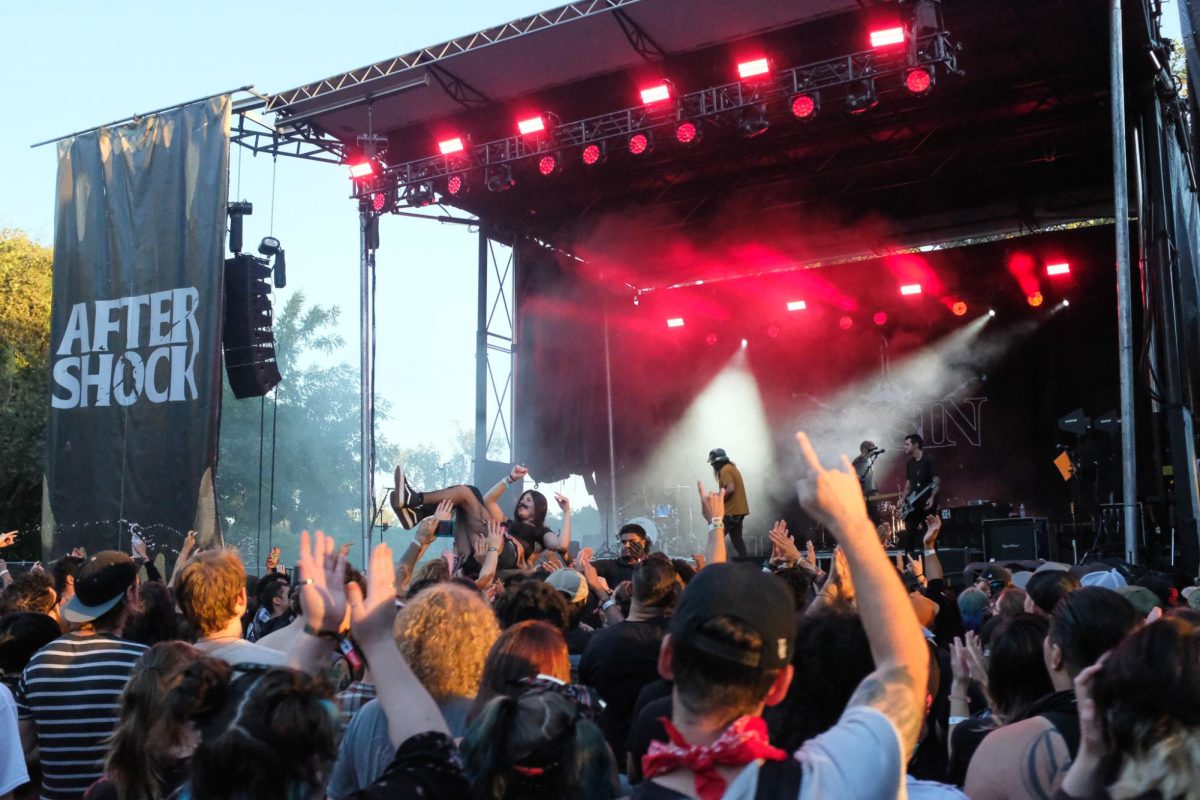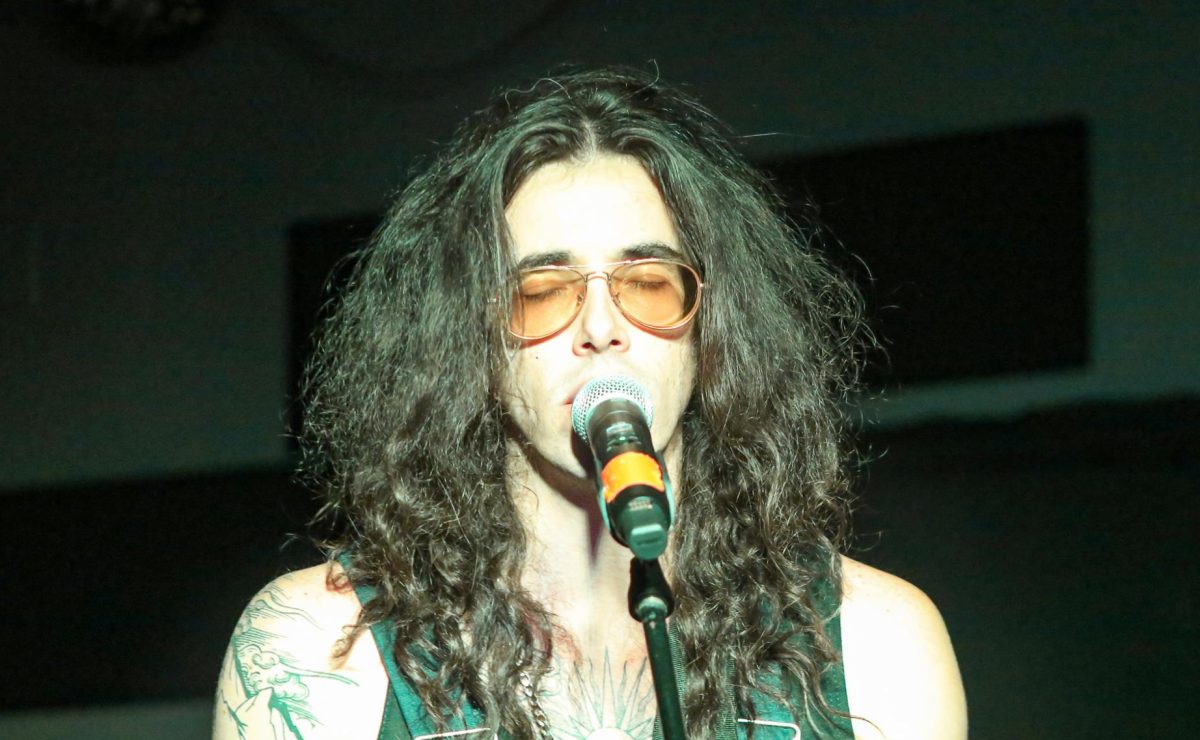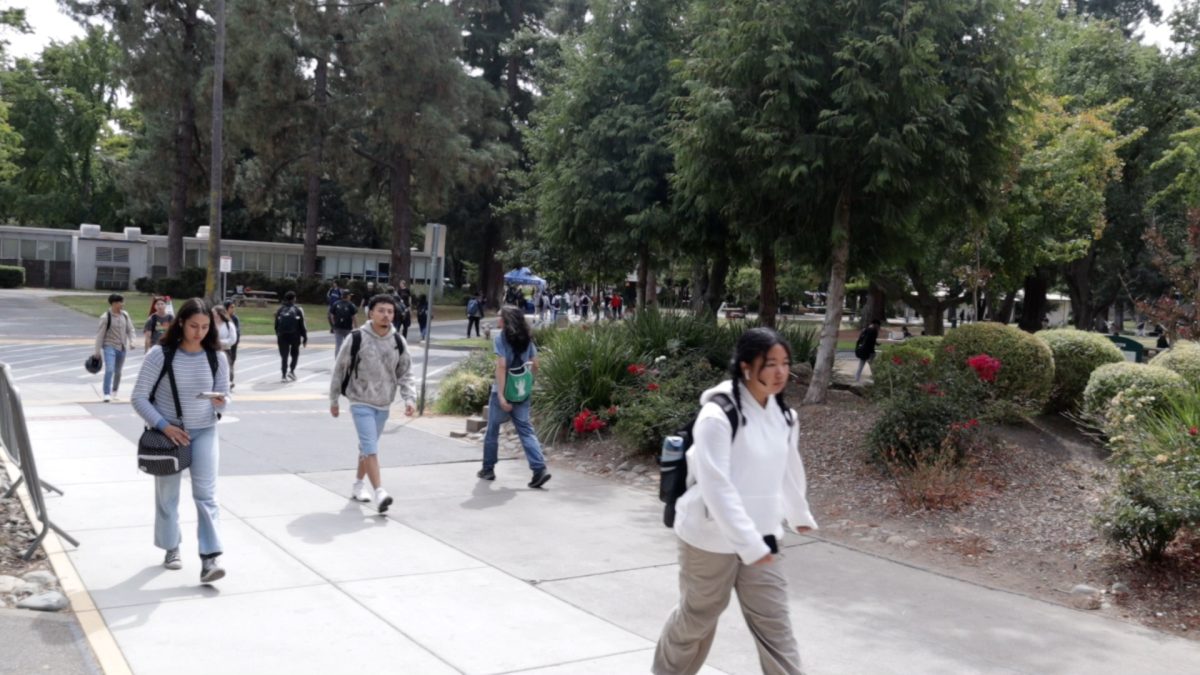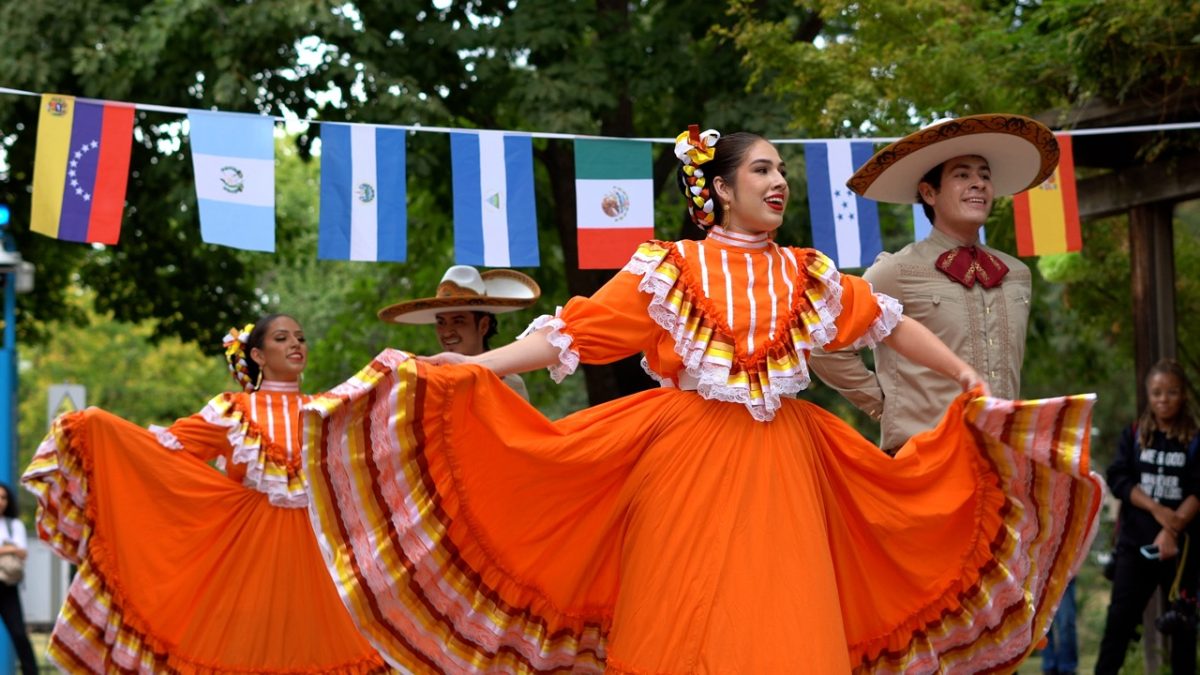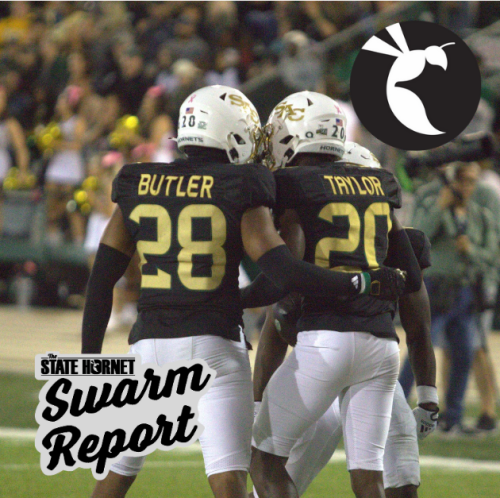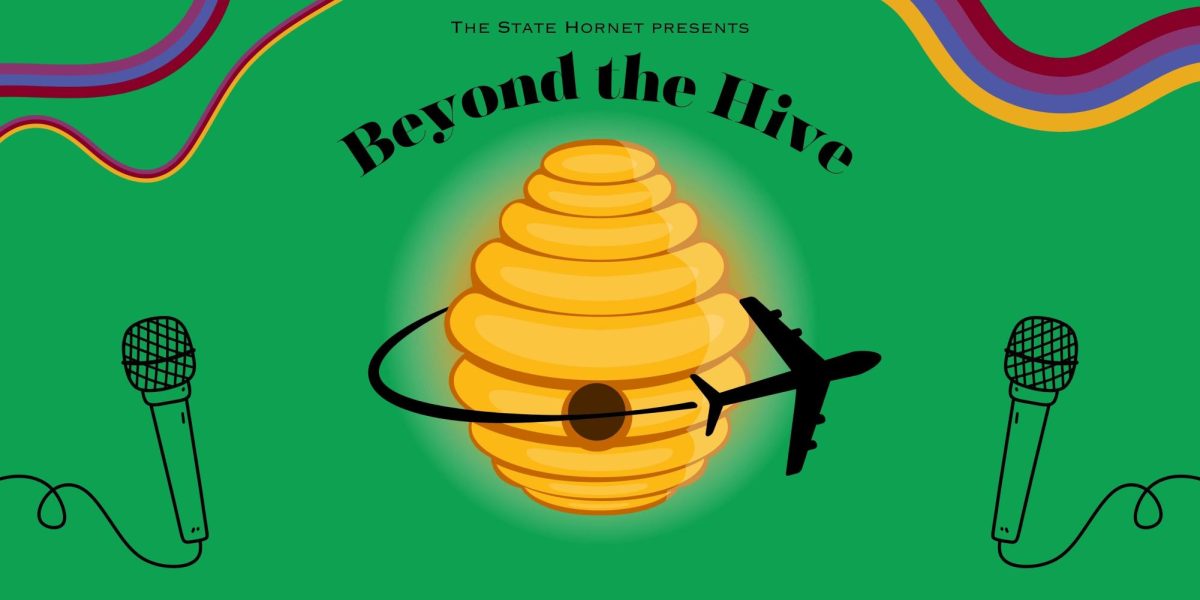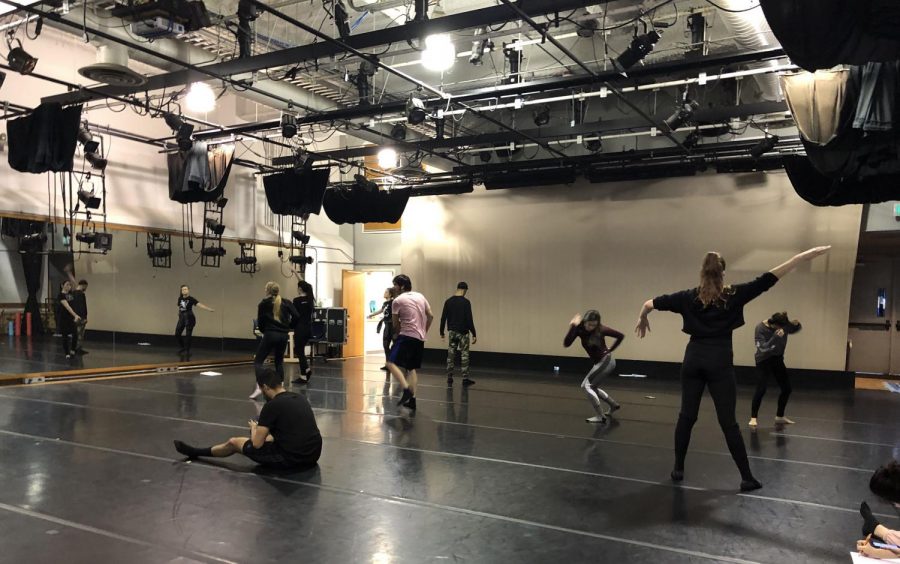Sac State’s dance program patiently awaits accreditation
Facility issues and curriculum updates requirements still to be met
Imani Morton - The State Hornet
Sacramento State dance students work on their project for Dance Composition II in Solano Hall 1010. Including proper dressing rooms and restrooms in this space will help with accreditation.
February 8, 2019
Due to facility issues and needed curriculum updates, Sacramento State’s dance department has yet to be accredited by the National Association of Schools of Dance, but are addressing changes to soon achieve accreditation.
Lorelei Bayne, the theater and dance department chair, said the dance department had a consultative visit from the NASD, and are hoping to be accredited in the near future.
The theatre department just recently received their accreditation through the National Association of Schools of Theatre or NAST.
“The theatre accreditation really helps the dance program because the theater and dance programs both share our scenic design, our lighting design, our technical theatre, our costume design, our costume shop, our scene shop,” Bayne said. “All of those fall under our theatre accreditation.”
Bayne said this puts the dance program closer to its accreditation because of the shared advantages.
“When we do end up being able to do our final steps towards the dance accreditation, we’re already that much closer to it because theatre is already accredited,” Bayne said. “In that way it’s really beneficial.”
Dance major Jacob Bailey, who has been in the dance program since his freshman year, feels like he’s still getting prepared for the professional dance world with or without the accreditation.
“The only thing is I don’t have as nice commodities as other universities, I don’t have the really nice dance studios, I don’t have the really nice dance spaces like Mondavi at UC Davis,” Bailey said. “Yes we don’t have these things but it doesn’t mean we aren’t learning. Dance is a cultural thing, you can learn it anywhere.”
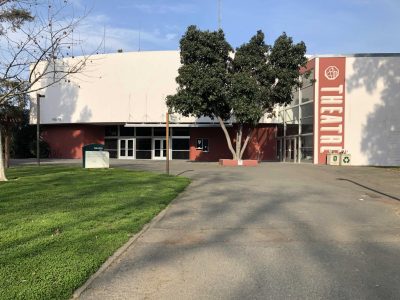
The department of theatre & dance is located in Shasta Hall just at the end of campus. The dance program is currently undergoing the process of becoming accredited.
The dance program’s facility issues are one of the main reasons they have yet to be accredited.
According to Bayne, the consultant pointed out that the dance space in Solano 1010 doesn’t have restrooms or dressing rooms, which are needed for accreditation.
“Right now our audiences go around and up the elevators to use the restrooms and our performers also have to be in a different location,” Bayne said.
Philip Flickinger, an assistant dance professor, said not having dressing rooms is a huge issue.
“Even the dressing room for performances is the professor’s office during the class time,” Flickinger said. “Through accreditation, we’re able to say this isn’t just something that we want, this is something that our program actually needs, and our students actually need.”
Another requirement is the expansion and updating of the curriculum. In the last three years, the program has updated the curriculum drastically.
“We have changed the names of some classes to keep them current with what the national standards are,” Flickinger said. “We added a music class that started this semester and we added a dance science class which we did not have previously in this department.”
The dance science class, Dance Science and Somatics, is taught by new professor Megan Brunsvold Mercedes. The CSUS course catalog describes the course as, “the study of skeletal structure, joint and muscle function and the mechanics of movement geared specifically for dancers and movement practitioners.”
The university has helped to support the program by hiring new faculty members.
“We have two new faculty members that have started in the last two years,” Flickinger said. “That literally doubles the amount of faculty in the dance program.”
Although receiving accreditation is important to the department, Flickinger said not being accredited doesn’t seem to have a huge affect on the program.
Flickinger said a lot of the programs in the state of California aren’t accredited. There are less programs in dance that are accredited than there are programs that are not accredited.
“Accreditation requires a certain amount of resources that means that you need to have the support of your college and of your dean, and we do.” Flickinger said. “We are definitely very well supported by this college. We are attempting to get accreditation to continue that support from the university.”



